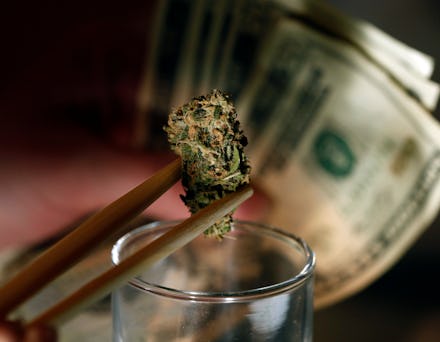Colorado Made $4M Off Marijuana in One Month. They're on Track for $134M by Next Year.

Both the Colorado public and the government have spoken, and the answer is loud and clear: Pot is here to stay, and it's going to make to make a lot of money for the state.
In its first month of business, Colorado's pot dispensaries made a staggering $14 million in profit. And thanks to the aggressive tax measure, the state coffers received a nice bump as well, with $2 million in taxes from recreational marijuana sales. Plus, when you factor in medical marijuana taxes and fees, the state made nearly $4 million in one month from just 59 businesses.
The figure is even more impressive when you consider that most of the dispensaries didn't even open at the beginning of the year. Only 24 recreational stores opened on Jan. 1, most of them just in Denver County. By the first week of business, the 37 dispensaries around the state made $5 million in total sales.
But the future looks even brighter. According to state figures released on Monday, Colorado stands to make nearly $1 billion in the next fiscal year, with $610 million coming from recreation marijuana alone. Between taxes and fees, the state will make a nifty $134 million in tax revenues as well.
In comparison, Colorado's liquor business only made only about $2.7 million in tax revenue last January. (Figures for January 2014 have not been announced yet.)
Of course, these numbers continue to change as the industry expands. Colorado's original estimate for tax revenue was a conservative $70 million for the next fiscal year. That number changed to $90 million and now to $134 million. Now, more than 160 recreational marijuana dispensaries are licensed, and more are added to the list every month as pot becomes an increasingly profitable and attractive business.
What will happen with all this money? Colorado governor John Hickenlooper is already finding creative ways to utilize the state's brand new revenue stream. From the 15% excise tax, $40 million is going to education and school construction around the state. The rest of the money, as well as the revenue from the 12.9% sales tax, is expected to go toward programs for drug prevention and substance abuse, as well as public health and law enforcement.